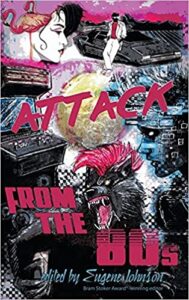The Darkest Night: Chilling Stories from the Biggest Names in Horror edited by Lindy Ryan
Crooked Lane Books, 2024 (pre-order)
ISBN-13 9781639108718
Available: Paperback, Kindle edition
Buy: Bookshop.org | Amazon.com
It’s certainly a busy moment for those who ,like me, love to read (and review) horror anthologies.
I’m not sure why, but we, fans of dark short stories, are enjoying ourselves because among a number of forgettable tales, there are always some which are worth the time we spend on them. not to mention the fact that there are continuously new authors to discover and to keep under observation.
The present anthology includes some great stories, in my opinion.
“Children Are Not the Only Ones Who Know Where the Presents Are Hidden “ (what a title!), penned by Josh Malerman, is a magnificent example of psychological horror, probing the secrets of a long-gone childhood haunted by unpleasant, ambiguous memories.
“The Body of Leonora James”, by Stephanie M Wytovich, is an outstanding tale of revenge, with a distinct supernatural taste.
Clay McLead Chapman contributes “Mr Butler”, a quite original, very disturbing piece revolving around a cardboard box endowed with unusual properties.
“Father’s Last Christmas”, by Lee Murray, is a gruesome black fable definitely not for the squeamish, while “ Bruiser”, by Jamie Flanagan, is an offbeat, excellent piece featuring a nurse getting involved with the crazy plans of an inmate.
Very good stuff, and obviously my favorites. Read the book and pick your own…
Reviewed by Mario Guslandi







Follow Us!